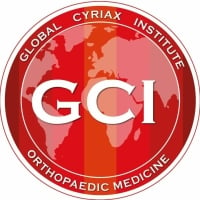Positive resisted test? Muscular dysfunction?
The Importance of Correctly Interpreting Resisted Tests in Orthopaedic Medicine
Resisted tests are a cornerstone of the functional examination in orthopaedic medicine, especially within the Cyriax approach. When applied correctly, they help differentiate between contractile lesions (muscles and tendons) and non-contractile or inert structures (ligaments, joint capsules, etc.).
However, the true value of resisted testing lies not just in performing the test — but in interpreting it accurately.
A strong and painful contraction, for example, may indicate a minor muscle strain, while a weak and painless response could suggest a serious issue like a complete rupture or neurological deficit. Misinterpreting these subtle distinctions can lead to misdiagnosis, inappropriate treatment, or missed red flags.
Correct interpretation requires:
- Understanding the mechanical purpose of each test
- Considering the pain response and strength level
- Integrating findings with the patient’s history and other tests
In short, resisted tests are only as reliable as the clinician’s reasoning. Developing precision in both execution and interpretation is essential for effective, evidence-informed clinical decision-making in musculoskeletal care.
